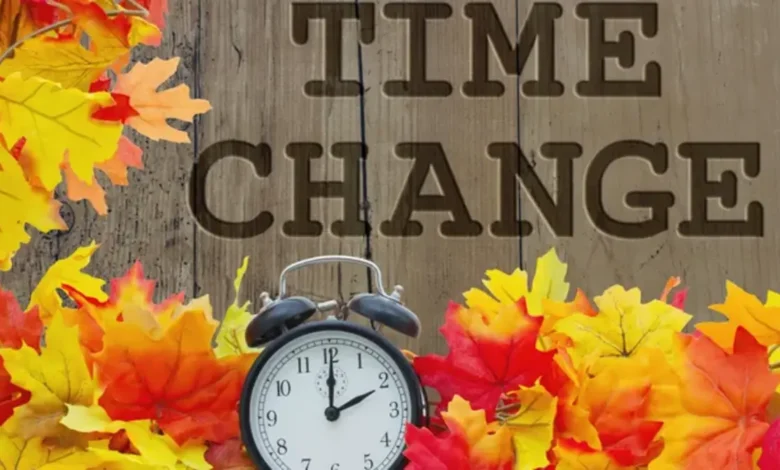Daylight Savings 2024: Everything You Need to Know

Introduction Daylight Savings 2024
Day light Savings 2024Time (DST) is a widely discussed topic each year as people adjust their clocks to make the most of daylight during the warmer months. The practice, which has both supporters and detractors, is aimed at making better use of daylight by setting clocks forward by one hour in the spring and setting them back again in the fall. As we approach Daylight Savings 2024, this article delves into its history, benefits, drawbacks, and the changes that may occur in the upcoming year.
What is Daylight Savings Time?
Daylight Savings 2024 Time (DST) is the practice of moving the clocks forward by one hour during the warmer months to extend evening daylight. The idea is to make better use of daylight during spring, summer, and early autumn, effectively conserving energy and promoting outdoor activities after work hours. In the fall, the clocks are set back to standard time, which provides an extra hour of daylight in the morning during the winter months.
In most parts of the United States, Daylight Savings Time begins on the second Sunday in March and ends on the first Sunday in November. For Daylight Savings 2024, the clocks will spring forward on March 10th and fall back on November 3rd.The History of Daylight Savings Time
The concept of DST is often attributed to Benjamin Franklin, who suggested it as a way to save candles during his time in Paris in the late 18th century. However, modern DST was first implemented during World War I by Germany to conserve fuel for the war effort. The idea quickly spread to other countries, including the United States, which officially adopted it in 1918.

Key Milestones in the History of Daylight Savings Time:
- 1916: Germany becomes the first country to implement DST during World War I.
- 1918: The United States adopts DST but repeals it after the war ends.
- 1942-1945: During World War II, the U.S. reintroduces DST, calling it “War Time.”
- 1966: The Uniform Time Act is passed in the U.S., standardizing the start and end dates for DST across the country.
- 2007: The Energy Policy Act extends DST by four weeks in the U.S., moving the start date to the second Sunday in March and the end date to the first Sunday in November.
The Purpose of Daylight Savings 2024
The primary goal of Daylight Savings 2024 remains consistent with its original purpose: to maximize daylight during waking hours, thereby conserving energy and promoting outdoor activities. The idea is that by shifting an hour of daylight from the morning to the evening, people are less likely to use artificial lighting in their homes, which can lead to reduced energy consumption.
Key Benefits of DST:
- Energy Conservation: Studies have shown that DST can lead to a modest reduction in electricity use, as households rely less on artificial lighting.
- Increased Outdoor Activities: Longer evenings encourage people to engage in outdoor activities like walking, jogging, and other forms of exercise, which can improve overall well-being.
- Economic Boost: Retailers and businesses, especially those in the tourism and hospitality sectors, often see an increase in revenue during DST months due to extended daylight hours.
- Road Safety: Some research suggests that extended daylight in the evening can reduce traffic accidents and improve pedestrian safety.
The Drawbacks of Daylight Savings Time
Despite its intended benefits, Daylight Savings Time has been the subject of controversy for years, with some arguing that it does more harm than good. As we look forward to Daylight Savings 2024, it’s important to consider the drawbacks associated with the practice.
Key Drawbacks of DST:
- Disruption to Sleep Schedules: The abrupt change in time can disrupt people’s internal body clocks, leading to sleep deprivation, decreased productivity, and negative impacts on health.
- Increased Risk of Heart Attacks: Studies have found a slight increase in the number of heart attacks in the days following the spring forward change, likely due to the sudden shift in sleep patterns.
- Economic Costs: While some industries benefit from extended daylight, others, such as farming, may suffer due to changes in schedules that disrupt their operations.
- Limited Impact on Energy Consumption: Modern studies have questioned the original premise of energy savings, noting that the impact on electricity use is minimal in today’s world, where air conditioning and electronics consume more power.
Countries Participating in Daylight Savings 2024
Daylight Savings Time is practiced in many countries around the world, but it is by no means universal. The practice is most common in North America and Europe, while many countries in Asia and Africa do not observe DST at all.
Countries Observing DST:
- United States: Most states participate, except for Hawaii and most of Arizona.
- Canada: Observed nationwide, though some regions have minor differences in start and end dates.
- Europe: Most European countries observe DST from the last Sunday in March to the last Sunday in October.
- Australia: Only certain states, such as New South Wales, Victoria, and Tasmania, observe DST, while others like Queensland do not.
Countries That Do Not Observe DST:
- China: Abandoned DST in 1991 due to concerns over its limited impact on energy savings.
- Japan: Does not observe DST, having experimented with it briefly after World War II.
- India: Sticks to standard time year-round, as the country experiences consistent daylight hours throughout the year.
Changes and Debates Surrounding Daylight Savings 2024
The future of DST has been a hot topic of debate, particularly in the United States and Europe. Several proposals have been made to eliminate the biannual clock changes in favor of adopting either permanent standard time or permanent daylight time.
Legislative Efforts in the United States
In recent years, there have been growing calls to abolish DST in favor of permanent daylight saving time. The Sunshine Protection Act, which was passed by the U.S. Senate in 2022, aimed to make DST permanent nationwide, eliminating the need to change clocks twice a year. However, the bill has yet to pass in the House of Representatives, and as of Daylight Savings 2024, the biannual time changes will still be in effect.
The European Union’s Plan to Scrap DST
In 2018, the European Parliament voted in favor of scrapping DST, proposing that member states choose between permanent summer time or winter time. However, due to disagreements among countries on which time to adopt, the decision has been delayed, and Daylight Savings 2024 will still take place as scheduled.
How to Prepare for Daylight Savings 2024
As Daylight Savings 2024 approaches, there are several steps you can take to ease the transition and minimize the impact on your daily routine.
Tips for Adjusting to Daylight Savings Time:
Conclusion: Is Daylight Savings Time Still Relevant in 2024?
The debate over the relevance of Daylight Savings 2024 continues, with valid arguments on both sides. While the practice was originally introduced to save energy and make better use of daylight, the modern world, with its advanced technology and changing lifestyles, has shifted the balance of pros and cons. The benefits of extra evening daylight are still appreciated by many, especially in terms of outdoor activities and economic benefits, but the disruption to sleep schedules and the questionable impact on energy savings have led some to call for its abolition.
As we prepare to spring forward in March and fall back in November, it remains to be seen whether the practice of changing our clocks will continue in the years to come or whether 2024 will mark the beginning of permanent timekeeping changes. Whether you love it or dread it, Daylight Savings 2024 is a reminder of how our perception of time is shaped not just by nature but also by human ingenuity and tradition.




